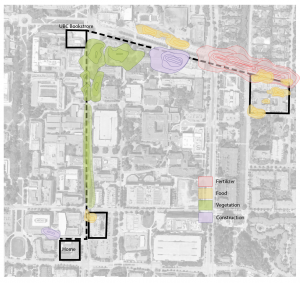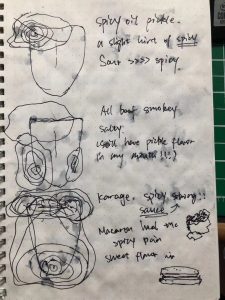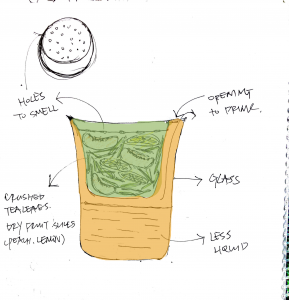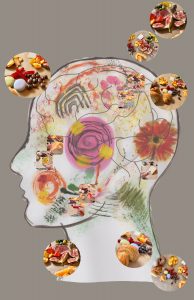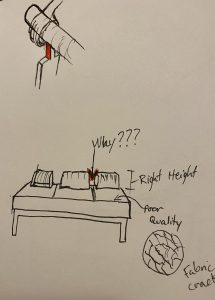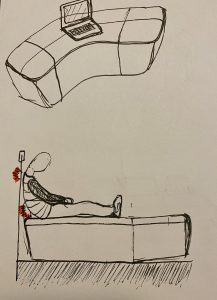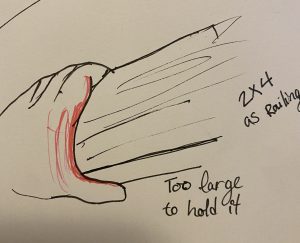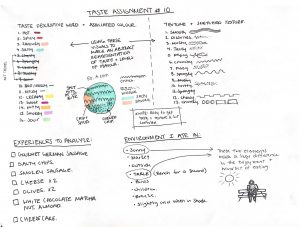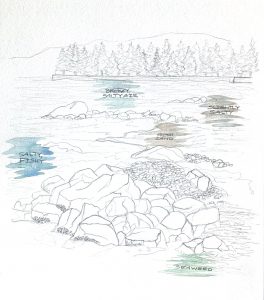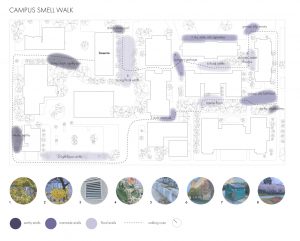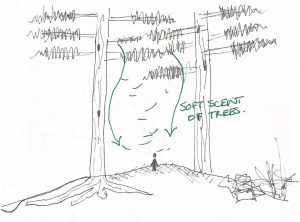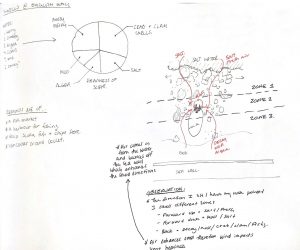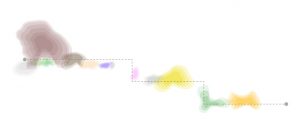In-class Exercises
Smelling the seawall
Seaweed on the rocks capture salty seawater which makes the smell stay longer, the wind blowing from the sea strengthens the smell. As the wind was gusting from the sea to seawall, similar to the waves forming several rounds of ripples, smell also shaped an overlayed radiation wave. Like seawater waves disappeared when hitting the rocks, the smell faded away over time.
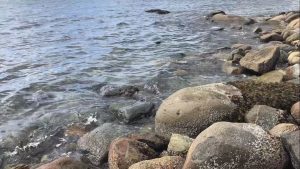

Smelling in the forest
The smell radiation changed into a different type of overlaying in the forest. Like diverse trees overlayed with each other using their canopy leaving a clear space underneath, the smells of these vegetation, twigs, streams interacted with each other making a natural smell harmony to the center (where I stand). I was surrounded by trees, also surrounded by the combination of smells.

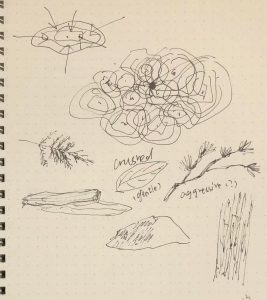
Although leaves smell similar, when they are crushed, they produced different, distinctive, some gentle, some aggressive scents.
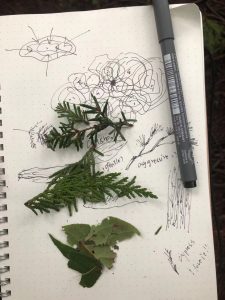

Here is the smell map recording my smell experience from UBC village along way back home.
